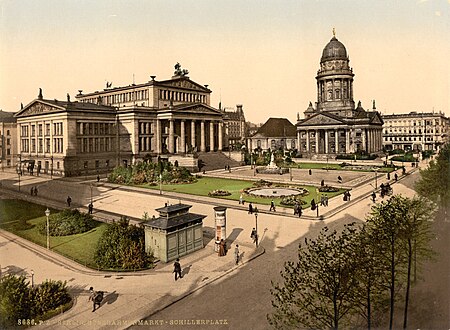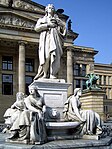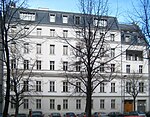Gendarmenmarkt
1688 establishments in the Holy Roman EmpireBuildings and structures in MittePrussian cultural sitesSquares in Berlin

The Gendarmenmarkt is a square in Berlin and the site of an architectural ensemble including the Berlin concert hall and the French and German Churches. In the centre of the square stands a monumental statue of poet Friedrich Schiller. The square was created by Johann Arnold Nering at the end of the seventeenth century as the Linden-Markt and reconstructed by Georg Christian Unger in 1773. The Gendarmenmarkt is named after the cuirassier regiment Gens d'Armes, which had stables at the square until 1773. During World War II, most of the buildings were badly damaged or destroyed. Today all of them have been restored.
Excerpt from the Wikipedia article Gendarmenmarkt (License: CC BY-SA 3.0, Authors, Images).Gendarmenmarkt
Charlottenstraße, Berlin Mitte
Geographical coordinates (GPS) Address External links Nearby Places Show on map
Geographical coordinates (GPS)
| Latitude | Longitude |
|---|---|
| N 52.513611111111 ° | E 13.392777777778 ° |
Address
Gendarmenmarkt
Charlottenstraße
10117 Berlin, Mitte
Germany
Open on Google Maps









